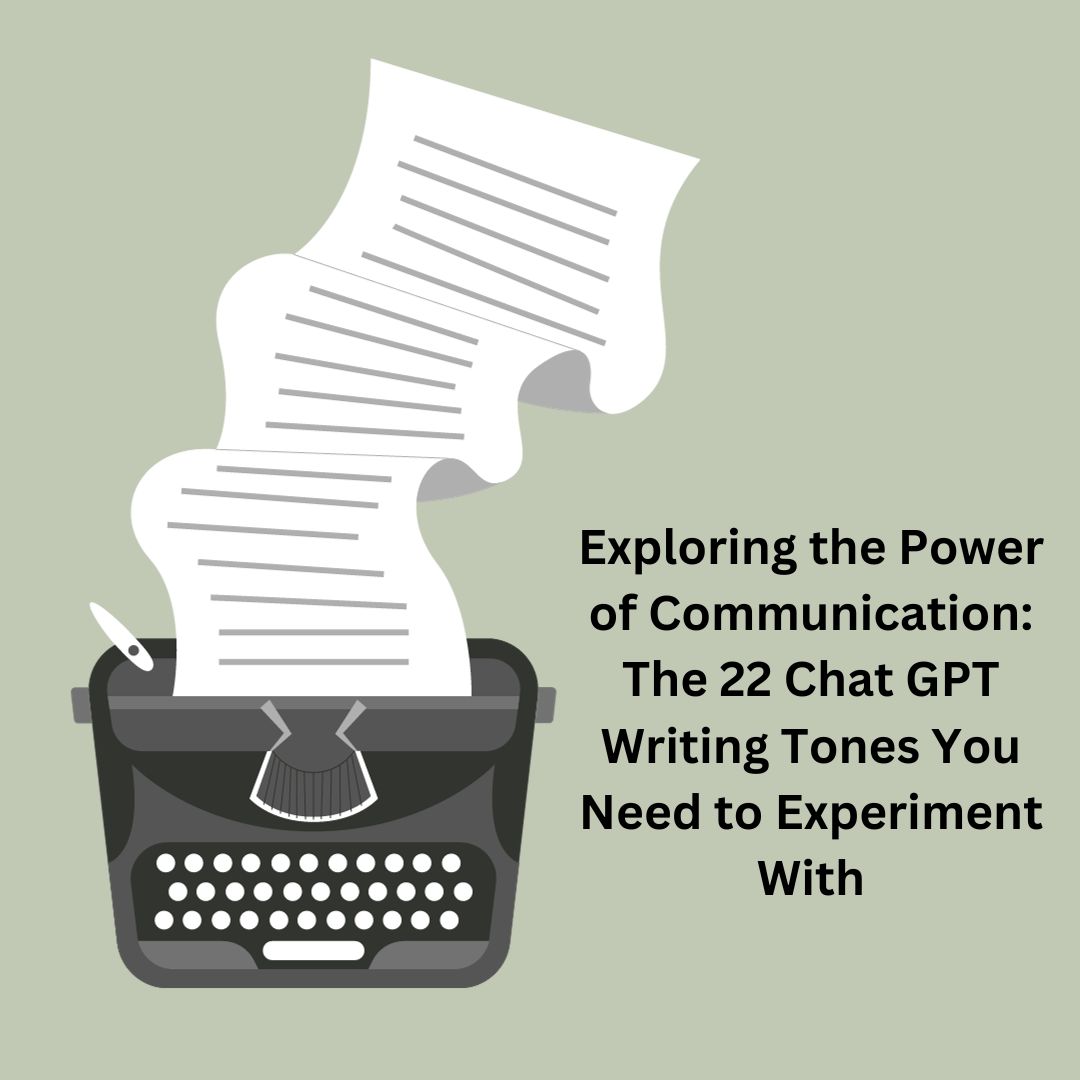|
Getting your Trinity Audio player ready...
|
-
Table of Contents
ToggleExploring the Power of Communication: The 22 Chat GPT Writing Tones You Need to Experiment With
 Communication is a powerful tool. It allows us to express our thoughts, share information, and build relationships. But did you know that the tone of your communication can significantly impact the effectiveness of your message? Yes, you heard it right! Your tone can either make or break the communication. Today, we will explore the 22 chat GPT writing tones that you should experiment with.
Communication is a powerful tool. It allows us to express our thoughts, share information, and build relationships. But did you know that the tone of your communication can significantly impact the effectiveness of your message? Yes, you heard it right! Your tone can either make or break the communication. Today, we will explore the 22 chat GPT writing tones that you should experiment with.
What are GPT Writing Tones?
GPT, or Generative Pretrained Transformer, is an artificial intelligence model developed by OpenAI. This AI model is capable of generating human-like text based on the input given to it. One of the fascinating features of this model is its ability to mimic different writing tones. When we talk about ‘writing tones’, we refer to the mood or attitude conveyed in a piece of writing. This could range from formal to informal, friendly to professional, and so much more. Through advanced AI models like GPT, we can now experiment with a variety of writing tones, enhancing our communication in unique ways.The 22 Chat GPT Writing Tones
Here are the 22 different writing tones you can experiment with:- Analytical: This tone is ideal for conveying information in an objective and data-driven manner.
- Angry: Use this tone sparingly. It can be useful for expressing frustration or dissatisfaction.
- Assertive: This tone conveys confidence and decisiveness. It’s great for making statements or delivering important messages.
- Concerned: Ideal for expressing worry or unease about a situation.
- Confused: This tone can help convey perplexity or uncertainty.
- Defensive: Use this tone when you need to protect your position or argument.
- Depressed: While not commonly used, this tone can express deep sadness or hopelessness.
- Disgusted: This tone is suitable for expressing strong dislike or disapproval.
- Excited: Ideal for sharing thrilling news or expressing enthusiasm.
- Fearful: Use this tone to express fear or apprehension.
- Formal: This tone is perfect for professional or official communications.
- Friendly: Ideal for casual, warm, and cordial communication.
- Frustrated: Use this tone to express irritation or annoyance.
- Happy: This tone conveys joy, satisfaction, or positivity.
- Informal: This tone is great for relaxed, casual communication.
- Neutral: Use this tone for unbiased, objective communication.
- Optimistic: This tone expresses hopefulness and positivity about the future.
- Pessimistic: Use this tone when you want to express a negative or gloomy outlook.
- Respectful: Ideal for showing regard or deference towards someone.
- Sad: This tone helps express feelings of unhappiness or sorrow.
- Serious: Use this tone for solemn or grave matters.
- Sympathetic: This tone is ideal for expressing understanding or compassion.
Conclusion
The power of communication is not only in what we say but also how we say it. By experimenting with these 22 GPT writing tones, you can enhance your communication skills and effectively convey your thoughts, feelings, and messages. Remember, the right tone can make all the difference, so don’t be afraid to experiment and find the ones that best suit your communication needs.

